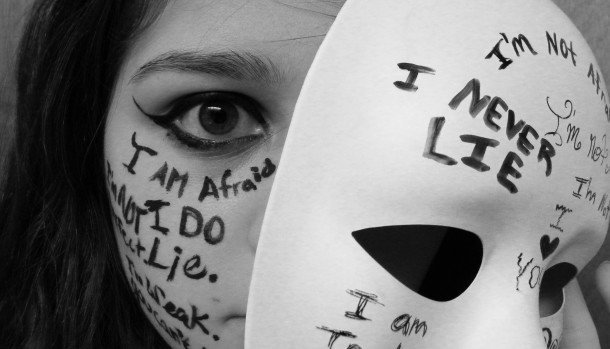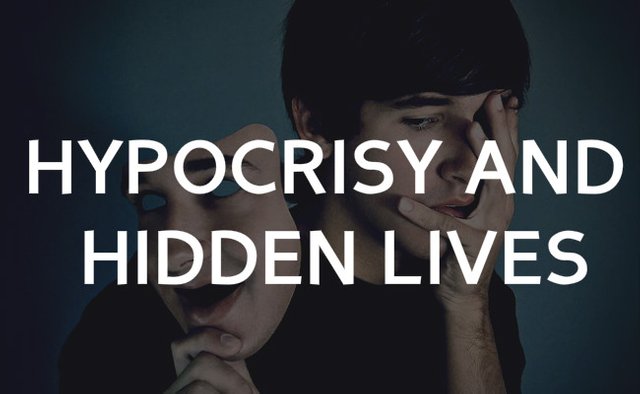For a significant number of us, a gigantic piece of everyday discussion rotates around prattle. We want to discuss the bumbles and slips of companions, family, and big names. Over that, news associations and informal organizations resemble shock speakers since that is the thing that gets the snaps. We are altogether used to ridiculing in the news, particularly when it's coordinated at government officials or entertainers. In any case, there's one specific name that truly stands out enough to be noticed.
In the event that you need to devastate somebody, consider them a " wolf in sheep's clothing."
Hypocrisy regularly includes censuring or denouncing the shameless demonstrations of others while taking part in those demonstrations ourselves. This can exacerbate us look than if we occupied with those indecent demonstrations, however, didn't censure them by any stretch of the imagination, which may sound odd. Be that as it may, okay rather somebody occupied with unethical conduct and scrutinized it or occupied with shameless conduct and didn't censure it? Plunging into the brain science of hypocrisy can make how we feel about it bode well.
Testing for hypocrisy
A trial in 2001 expected to transform individuals into wolves in sheep's clothing in the lab. Members were to allow an arrangement of assignments to themselves and an obscure second member. One sort of assignment was energizing and offered rewards while the other was impartial without any prizes. A coin set alongside the members had a composed guidance clarifying that the vast majority thought flipping the coin would be a reasonable method to disseminate the errands. To be sure, for all intents and purposes the majority of the members concurred that flipping the coin to allocate errands would be the best thing.
In any case, when it boiled down to it, just 50% of them really flipped the coin, with for all intents and purposes everyone in the non-coin-flipping half giving themselves the energizing errands. Among the general population who flipped the coin — which was marked "self" on one side and "other" on the other — 85% to 90% still figured out how to dole out the energizing assignment to themselves. Unmistakably, either the coin was an otherworldly sycophant or the members imagined the coin had arrived to support them when it truly hadn't.
Individuals needed to look reasonable by utilizing a coin to settle on their choice, however off camera, they were similarly as narrow-minded as the general population who did not utilize the coin by any means (a large portion of whom had concurred utilizing the coin would be the most reasonable yet didn't do it). It's each of the ideal cases of good hypocrisy at work.
The drive behind hypocrisy
Self-intrigue is the most evident purpose behind any of us to act like two-timers. At the point when individuals are examined concerning why they act in the struggle with their very own expressed good principles, many will state that the individual expenses are sufficient to exceed the goal to act ethically. Basically, we as a whole need to act reasonably until the point that we are put on the spot and confronting our very own results. For instance, it's anything but difficult to legitimize a considerable lot of our unfulfilled wishes to give to philanthropies and fizzled tendencies to help an outsider in need by revealing to ourselves that we can't bear to do it at this moment.
We as a whole need to act reasonably until the point that we are put on the spot and confronting our very own results.
Our hypocrisy encourages us out, that is without a doubt. In any case, we likewise utilize it in our connections. Often, when we rate the decency or profound quality of other individuals' activities, we judge them more brutally than we judge ourselves doing likewise activities. In 2007 give an account of an adjustment of the energizing undertaking/exhausting errand worldview depicted before, members thereafter were advised to pass judgment on their and others' decency on a scale from 1 (to a great degree uncalled for) to 7 (amazingly reasonable). Individuals scored themselves a 4 by and large yet evaluated others' reasonableness at just a 3 overall.
Strikingly, our judgments of other individuals have a tendency to be unquestionably ideal if those others fall inside our in-gathering (regardless of whether it's a simply discretionary in-aggregate described by an irregular quality). We often judge an in-amass part's troublemaking to be similarly as reasonable as our own. We just have a more noteworthy abhorrence for other individuals' awful practices when those individuals fall outside a group of friends that we ourselves have drawn.
Be that as it may, for what reason is hypocrisy so disagreeable?
We've secured what hypocrisy looks like and what persuades it, yet we haven't handled why we appear to abhor it to such an extent. One in number clarification identifies with false flagging. Basically, charlatans utilize a twofold layer of trickery in their unethical acts — one more layer than the essential liars who just say they've acted ethically when they haven't. When we fraudulently denounce somebody's corrupt conduct, we mask our own bad conduct with a shroud of enticement or control. It's simpler to see through an inside and out lie than a wolf in sheep's clothing's judgment. Over that, a wolf in sheep's clothing has carried someone else into the diversion. Rather than specifically denying their unethical behavior, the scoundrel tricky suggests they are great by endeavoring to disgrace another person. This is a formula for contempt when gotten out.
Wolves in sheep's clothing utilize a twofold layer of double-dealing in their unethical acts — one more layer than the essential liars who just say they've acted ethically when they haven't.
An arrangement of late trials had Yale staff testing this false flagging hypothesis by giving individuals anecdotes about various types of liars and deceivers and afterward considering how individuals made a decision about the characters inside those accounts. Four critical outcomes left these preliminaries:
1. At the point when a man censures other individuals' conduct and we don't know anything else about that individual, we ordinarily trust it originates from their ethical goodness.
2. A judgment of terrible conduct is a more grounded flag of a man's ethical goodness than cases of expressly evading awful conduct.
3. At the point when a man censures a conduct that they themselves submit (poser), we rate them as essentially more terrible than a man who says they don't submit a conduct when they do (liar).
4. We see deceivers better on the off chance that they admit to some of the time taking part in the awful conduct than if they make no such confirmation.
In general, it backs up the possibility that we have a more noteworthy resistance for liars than we have for deceivers. Fakers resemble an extraordinary sort of liar who puts additional exertion into camouflaging their bad conduct and sending us bogus signs of good prevalence. Those false flags drive our scorn. In the event that a wolf in sheep's clothing speaks the truth about their hypocrisy — if they dispose of false flags by admitting to what they condemn — our perspective of them can turn out to be fundamentally more ideal.
Maybe there's an exercise we can learn here. In case we will lie, that is sufficiently terrible; how about we make an effort not to trick and divert other individuals by pointing the finger. Now and again, it's alright to be straightforward about our imperfections. No one is flawless, however legit self-feedback and the capacity to concede when we neglect to satisfy our own models might be a decent establishment for respectability. Scoundrels are horrendous individuals. What's more, at times, I'm one of them.



You got a 10.59% upvote from @brupvoter courtesy of @shayaikesalvy!
Downvoting a post can decrease pending rewards and make it less visible. Common reasons:
Submit
Congratulations!
This post has been upvoted from Steemit Bangladesh, @steemitbd. It's the first steemit community project run by Bangladeshi steemians to empower youths from Bangladesh through STEEM blockchain. If you are from Bangladesh and looking for community support, Join Steemit Bangladesh Discord Server.
If you would like to delegate to the Steemit Bangladesh, you can do so by clicking on the following links:
50 SP, 100 SP, 250 SP, 500 SP, 1000 SP.
YOU ARE INVITED TO JOIN THE SERVER!
Downvoting a post can decrease pending rewards and make it less visible. Common reasons:
Submit
Congratulations! This post has been upvoted from the communal account, @minnowsupport, by Shayaike from the Minnow Support Project. It's a witness project run by aggroed, ausbitbank, teamsteem, someguy123, neoxian, followbtcnews, and netuoso. The goal is to help Steemit grow by supporting Minnows. Please find us at the Peace, Abundance, and Liberty Network (PALnet) Discord Channel. It's a completely public and open space to all members of the Steemit community who voluntarily choose to be there.
If you would like to delegate to the Minnow Support Project you can do so by clicking on the following links: 50SP, 100SP, 250SP, 500SP, 1000SP, 5000SP.
Be sure to leave at least 50SP undelegated on your account.
Downvoting a post can decrease pending rewards and make it less visible. Common reasons:
Submit
Hi @shayaikesalvy!
Your post has been upvoted by @bdcommunity.
You can support us by following our curation trail or by delegating SP to us.
20 SP, 50 SP, 100 SP, 300 SP, 500 SP, 1000 SP.
If you are not actively voting for Steem Witnesses, please set us as your voting proxy.
Feel free to join BDCommunity Discord Server.
Downvoting a post can decrease pending rewards and make it less visible. Common reasons:
Submit